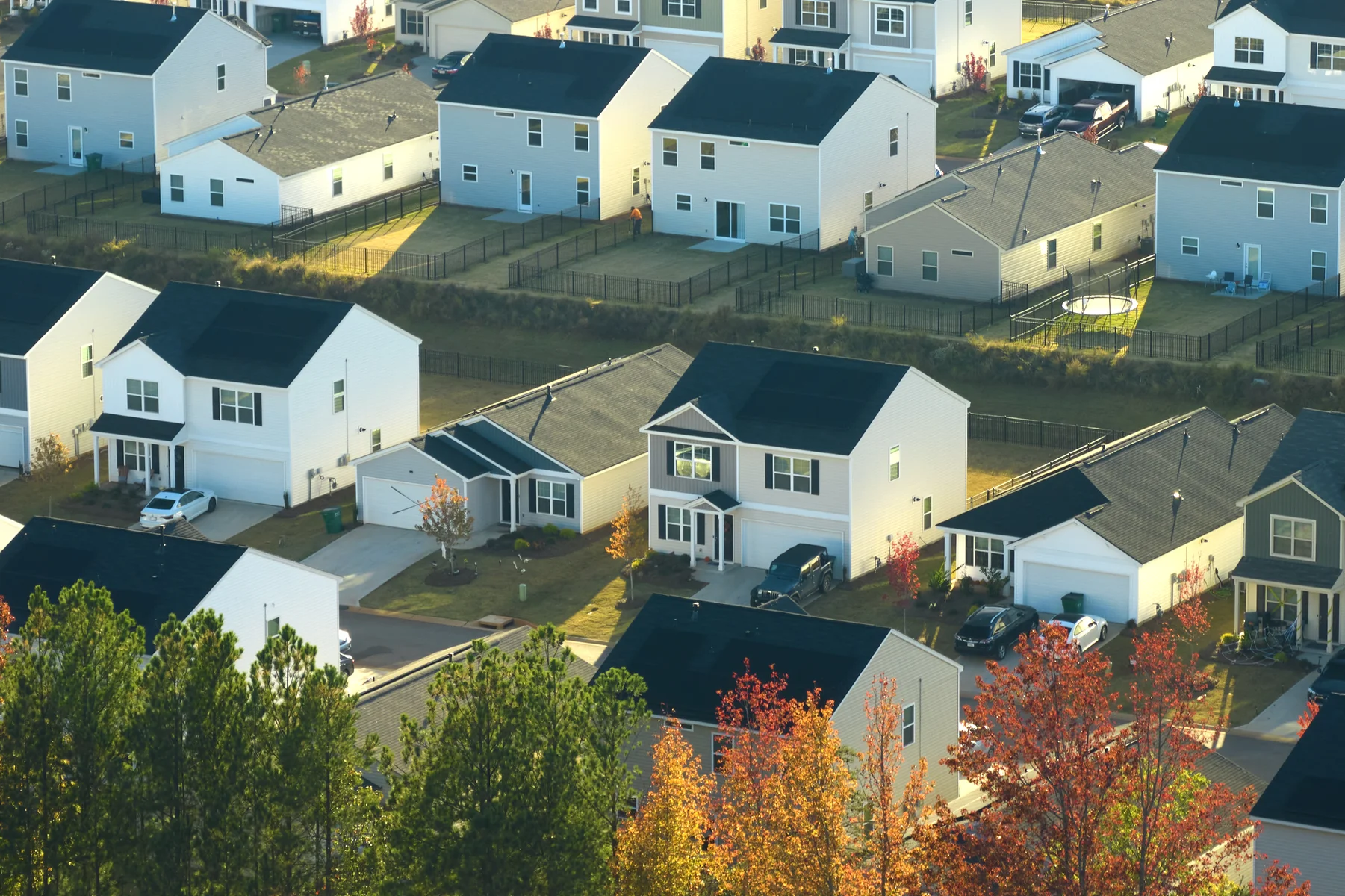
How Much Does It Cost to Maintain Housing in the US? All About Property Taxes in the USA
Homeownership is the average American’s most important asset. But its maintenance often costs households a third of their income. Expenses include not only utilities, loan or mortgage payments, property taxes play an important role.
In our article, we will look at the general costs of maintaining housing in the United States and take a detailed look at how property taxes work, why they are important, and how they affect your budget.
Total Housing Costs in the US
Housing in the US, although not the cheapest, is relatively affordable thanks to a developed lending system. As of 2024, about 70-80% of all new properties in the US were sold with its help. Currently, the mortgage rate is 6-7%, which means that for a house worth $400,000, a household needs to pay an average of $1,500-$2,000 per month. There are also associated costs:
- Public utilities. Another $200—$400 per month is for electricity, water, heating, and Internet. In cold climate states, you also have to pay for heating, and in warm climates, for air conditioning.
- Insurance. Home insurance costs between $100 and $200 per month, but in states with frequent natural disasters, it starts at $500.
- Maintenance and repair. For single-family homes, this is an additional $100—$300 per month. The fee includes grounds maintenance, minor repairs, or homeowner association (HOA) services.
The type of housing also plays a role. The owner of a private house pays all the bills himself, whereas apartments and condominiums are cheaper to maintain, since some expenses (for example, cleaning the territory) are covered by HOA dues ($200-$500 per month).
Property Tax in the USA
The property tax in the USA is not federal. This means that its rates and calculation procedure are set at the level of states, counties, and municipalities. States set the general framework and rules of the tax. In turn, counties and municipalities (cities, towns) set specific rates depending on their budget needs.
The only thing that is common to the tax is that it is paid only by property owners, regardless of whether the property was purchased in cash or through a mortgage. Renters do not pay it, but landlords often include it in the rent.
The calculation of property tax is based on a simple formula:
- Assessed value of home x tax rate = tax amount.
- Assessed value is determined by local authorities (usually county assessors) based on the market value of the property.
- The tax rate varies from region to region and is typically 0.5–2.5% of the assessed value.
The tax payment deadline also varies by state, but in most states, it must be paid annually in one or more payments. For those paying a mortgage, the tax is often included in the monthly payment through an escrow account managed by the bank.
The Average Effective Property Tax Rate in the Country
The average tax rate across the country is calculated using the effective property tax rate. This reflects the real share of tax on the value of housing, and in 2023, this rate was about 0.87%. There is no data yet for 2024, but given the rise in house prices, the figure is likely closer to 0.9-1.0%. This is confirmed by preliminary estimates from the Tax Foundation for early 2025.
At the effective tax rate, the average American household pays about 1% of the market value of its home each year. For a $400,000 home, that’s $4,000 a year, or $333 a month.
Regional Differences in Property Taxes
In reality, the tax rate in a particular state will be higher or lower — it all depends on the standard of living in it. For example, in New Jersey, you have to pay 2.3% of the property value, which means that for a house worth $400 thousand, you have to pay $9,200 per year. On the other hand, there is Hawaii, where the rate is the lowest (only 0.27%), and the payment amount is $1080 per year.
The amount of tax depends on three main factors:
- Local budgets. States and districts with high spending on schools, infrastructure, and public services charge higher rates.
- Estimated value of housing. In regions with expensive real estate, the tax base is also higher.
- Alternative sources of income. States with low property taxes compensate with high taxes on sales or tourism revenue.

Top 5 States With the Highest and Lowest Property Taxes
Let’s look at regional differences in practice and list the states with the highest and lowest property tax rates. Let’s start with the anti-record holders, where the rate hits household budgets the hardest:
- New Jersey. Local authorities pay a lot of attention to the development of education, and dense urban development forces them to spend more money on the maintenance and development of infrastructure. That is why the rate here is the highest, 2.3%.
- Illinois. Illinois funds schools directly from tax revenues; pensions and benefits also depend on the size of the budget. With no other major sources of income, the state tax is 2.18%.
- Connecticut. Connecticut spends heavily on education and infrastructure in the suburbs, where housing costs are high, which keeps the tax rate at 2.00%.
- New Hampshire. The high rate of 1.88% is due to the absence of a sales tax and a low income tax. That is, local authorities maintain the overall level of revenue but reduce income taxes to attract professionals with high salaries, compensating for this by increasing the tax on housing.
- Texas. The complete absence of income tax has forced Texas authorities to raise other taxes and fees, including the property tax, which is 1.79%.
The lowest property taxes are in the following states:
- Hawaii. Hawaii gets enough revenue from tourism that it can afford to set a property tax rate of 0.27%.
- Alabama. The low 0.40% rate is due to the generally low cost of housing in the state. The local budget takes its main income from high sales taxes.
- Colorado. There are no unique reasons why Colorado set the rate at 0.49%.
- Nevada. Nevada gets a huge income from gambling and tourism (Las Vegas alone is worth something), which is why the local tax rate is 0.55%.
- Arizona. In Arizona, the rate is 0.62%. As with Colorado, there are no obvious reasons — both states simply pursue balanced tax policies and strictly control rate increases.
It is worth noting that taxes are higher in urban areas due to expensive real estate and high service costs. For example, in Chicago (Illinois), the rate exceeds 2%, and in its suburbs it is 1.5%.
How to Reduce Tax Expenses
There are ways to reduce the amount of housing tax, and the main one is revaluation. The fact is that the assessed value of the property is set by local authorities, which tend to overstate the final figure. You can check it by requesting an assessment report from the office of the county assessor or online. In it, you need to check whether the dimensions of the house are indicated correctly and whether the data on its condition are up to date. If there are discrepancies, you can file a request for a review of the assessment.
If you still disagree with the revaluation, you can appeal. The deadline for filing is usually one or two months after receiving notice of completion of the revaluation. You will need to prepare evidence for the appeal: photographs of the condition of the house, sales data for comparable properties with a lower value. A successful appeal can save you hundreds or thousands of dollars a year.
In addition, there are state-level incentive programs such as homestead exemptions, discounts for seniors, veterans, or people with limited incomes. For example, in Texas, a homestead exemption can reduce a home’s taxable value by $25,000 to $50,000.
Examples of programs in different states:
- StayNJ in New Jersey. Launched in 2023, the program aims to support older homeowners (65+). It offers a discount of up to 50% on property taxes (maximum $6,500 per year) for those who have lived in their home for at least 10 years and earned at least $500,000 during that time.
- Circuit Breaker in Illinois. This is a program for seniors and low-income residents. It provides a tax credit of up to $700 per year, but only if the household income is below $35,000 (for an individual) or $50,000 (for a couple).
- Senior Freeze in Connecticut. Freezes the tax at the current level for residents over 65 and with incomes under $49,500. This protects against tax increases due to rising home values.
Let’s Sum It Up
In the US, the average household spends about 30-40% of its monthly income on housing. This is quite a lot, but you can save money by choosing a state with a low tax base and cost of living. For example, for a house worth $400,000 in New Jersey, you need to pay $9,200 per year, while in Hawaii it is only $1080 per year.
There are, however, ways to reduce your tax burden even further. Taxes are calculated based on the assessed value, which can be reviewed or even appealed if the final amount seems too high. You can also take advantage of incentive programs such as StayNJ or homestead exemptions.
The best option would be to consult with a local lawyer, who will advise you on additional options for reducing the financial burden.
Author
I write informative articles about real estate, investments, job opportunities, taxes, etc.
























